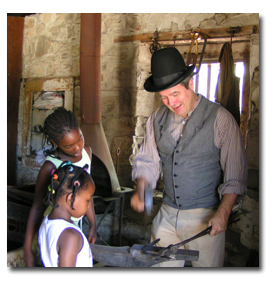19th Cenutry Working Men--Dressing the Part
| A week or so ago, I was participating in my usual monthly living history at Los Encinos State Historic Park (http://los-encinos.org). It was June in the San Fernando Valley, it was around 100 Degrees Farenheit, and I wasn't doing too badly. I reflected on the fact that in my "Ranch Hand" garb, I was wearing probably the best gear any European could wear in the sweltering desert that is Southern California--and I was also entirely historically correct. |
It does however, has some important differences from modern attire, which distinguish correct from wrong. The elements of this are the hat, which can be in lots of styles-- though the modern "cowboy hat" is one that is not actually correct; the shirt which is like the modern shirt, but with differences; the trousers which are like blue jeans but have some important differences; and the shoes which are also easy to manage, though modern "cowboy boots" are not usually the best choice.
Shoes: Simple boots without pointed toes and frills are good, Civil War "brogans" are good, "engineer boots" with the straps removed are good, Army combat boots are okay and even lace up construction boots are okay. The essence of all this is simplicity. It's all natural fibers, it all wears well and just looks better with age, and is improved by stains, faded bits and the thousand natural shocks that historical costumes are heir to. More later. Cheers, Walter Related Post: Where to get the stuff
|








